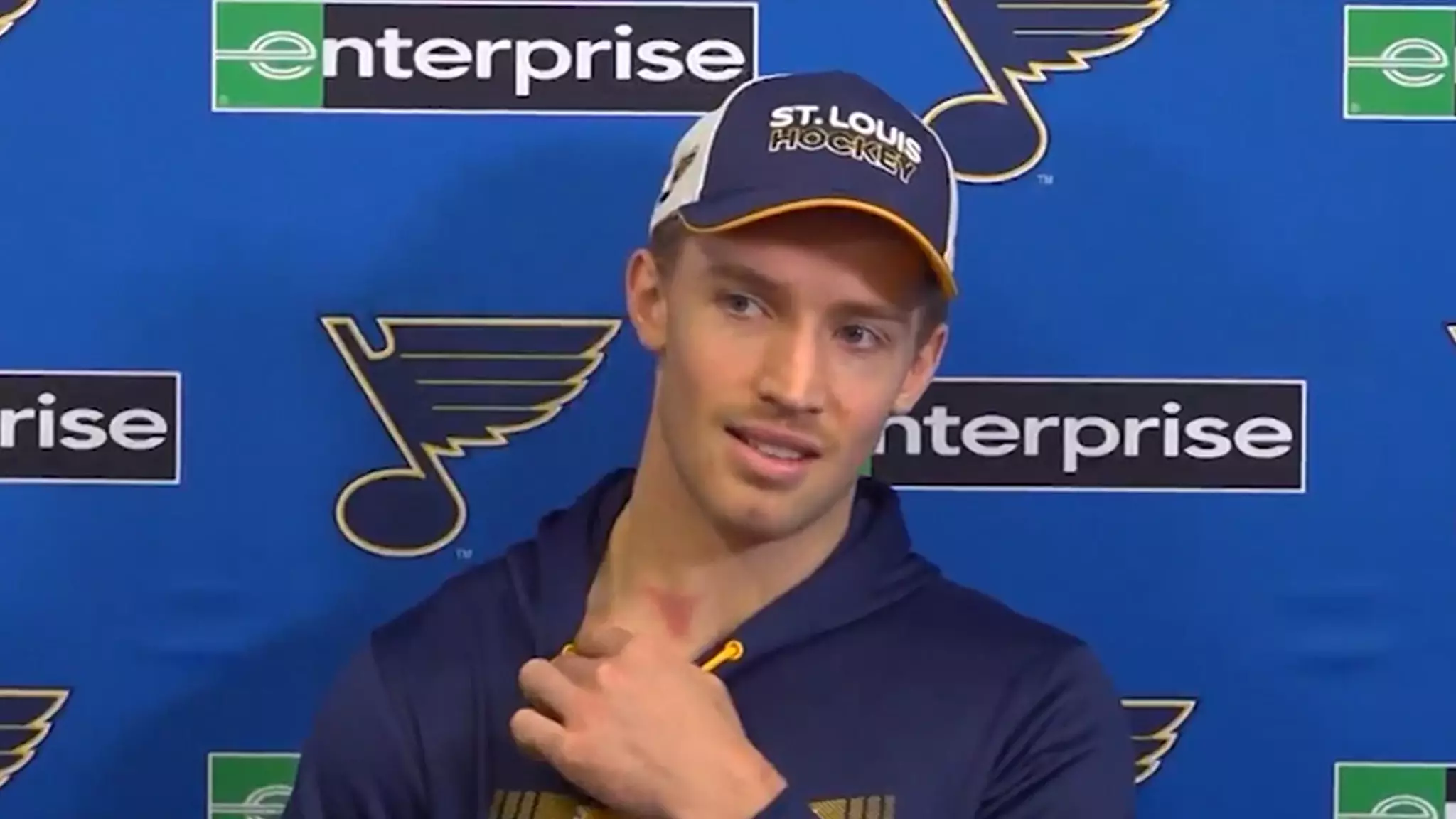On a tense Tuesday night, St. Louis Blues forward Dylan Holloway found himself at the center of an alarming incident during a game against the Tampa Bay Lightning. Just 19 minutes into the first period, a powerful wrist shot from Nick Paul struck Holloway directly in the neck, causing immediate concern among players and fans alike. Though initially able to skate off the ice, the reality of the situation quickly set in as he was later rushed to a nearby hospital. The incident not only shocked the audience but also showcased the inherent risks that come with professional hockey.
Only hours after his harrowing experience, Holloway addressed the media, conveying a sense of relief and optimism. The young player, who is just 23 years old, described how the puck impacted a major nerve near his neck, leading to a brief loss of consciousness. “Tests have all come back OK,” he reassured reporters, underscoring a miraculous recovery from a potentially life-threatening situation. His statement about needing just a 24-hour break before returning to the ice offers hope for his swift recovery and illuminates the mental strength required to face such traumatic experiences.
The Blues’ community rallied around Holloway during this trying time, emphasizing the familial bond that exists within the team. Coach Drew Bannister articulated the gravity of the situation by relating it to a personal family emergency, demonstrating how deeply players care for one another beyond just the game. The emotional weight carried by teammates was palpable, highlighting how incidents on the ice often transcend sports, affecting both personal and professional lives. Their swift action to safeguard his health is commendable and shows the importance of preparedness in the face of crises.
Holloway’s incident serves as a reminder of the unpredictability of the sport. However, it also sheds light on the resilience of athletes and the collective support they offer each other through thick and thin. The Blues’ victory over the Lightning, despite the terrifying happenings, symbolizes not only a triumph in the game but also a greater narrative of perseverance and solidarity. As updates about his condition were communicated through the team’s social media platforms, the community’s engagement displayed a shared sense of relief and hope.
Looking ahead, Holloway’s determination to return to the ice swiftly aligns with the ethos of many athletes who thrive on overcoming adversity. His resilience is not just an individual victory but also a narrative that inspires fans and fellow players alike. In professional sports—where the line between triumph and tragedy can be razor-thin—Holloway’s story is one that reminds us of the power of the human spirit to recover and prevail, both on and off the ice. As he prepares to return, fans will undoubtedly be watching with bated breath, hopeful for a full comeback and a promising future.

Leave a Reply